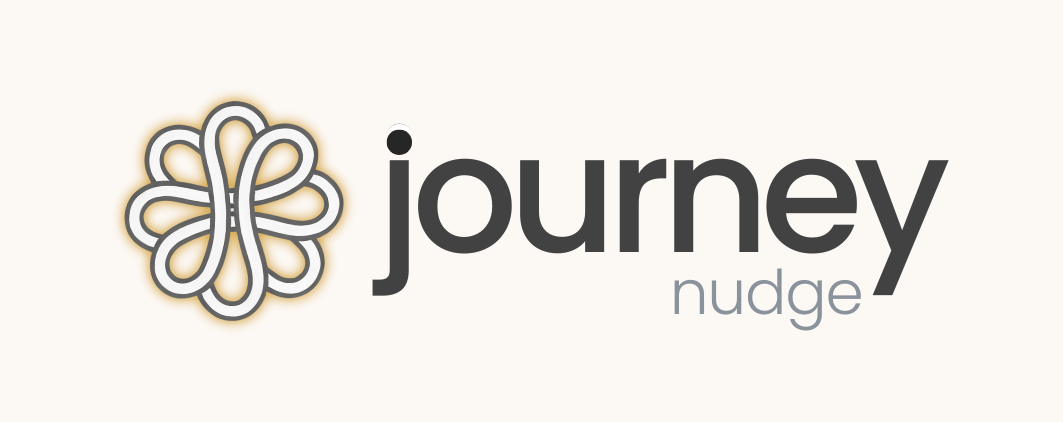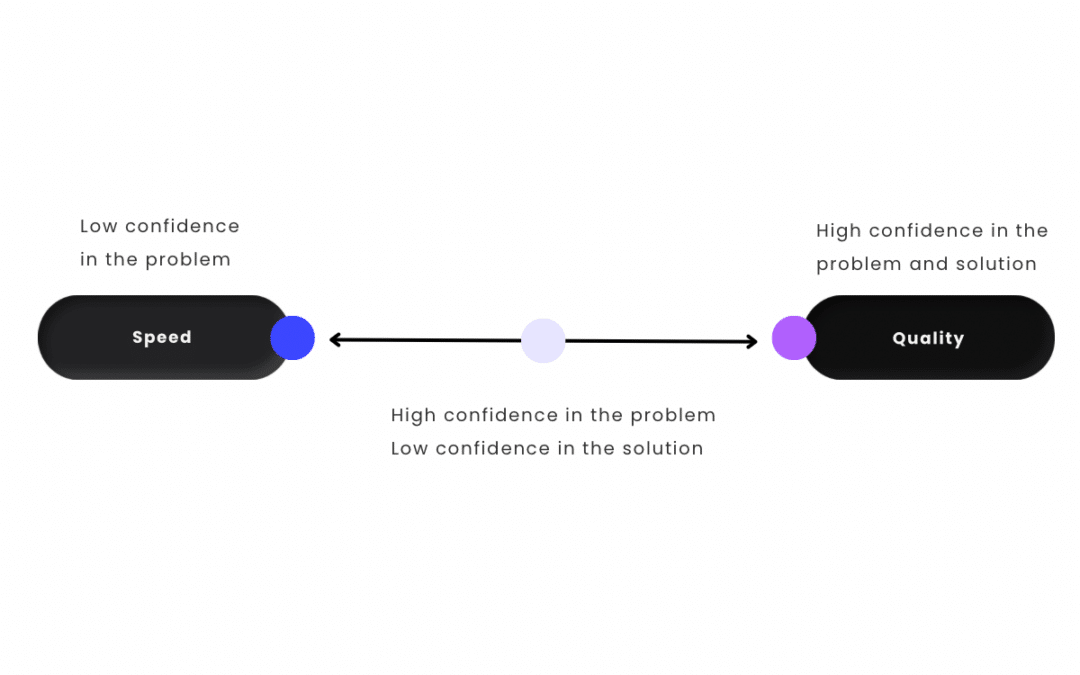Reading Time: 6 minutes
Key Points
- The balance between speed and quality in product development is pivotal.
- Your emphasis on speed or quality should be determined by your confidence in the problem’s importance and the aptness of the solution.
- Utilize data-driven insights to guide this confidence and avoid subjective biases.
Balancing Speed vs. Quality:
A Guide to Informed Decision-Making
In the dynamic realm of product development (or any endeavor, really), the tug-of-war between speed and quality is a constant challenge.
Understanding when to prioritize one over the other is crucial for optimal results. This guide introduces a structured approach to makingjourneynudge.com/minto-pyramid that crucial decision.
Guiding Your Decision With Confidence
To determine whether to prioritize speed or quality, gauge your confidence in two primary areas:
- Problem Importance: How crucial is the problem you’re addressing?
- Solution Correctness: Is your proposed solution the right one?
Data Over Opinion
Before delving into the decision-making process, ensure that your confidence stems from objective data and not mere personal perceptions or biases.
Outcomes Based on Confidence
-
- Emphasize Speed: If you have low confidence in the problem’s importance. The aim is to iterate rapidly.
- Emphasize Quality: If you’re highly confident in both the problem’s importance and the solution’s correctness. The aim is to deliver the best possible product.
- Strike a Balance: If the problem’s importance is evident, but the solution’s correctness remains uncertain. You’ll want to navigate with a blend of speed and diligence.
Remember, confidence is not binary; it operates on a spectrum. As such, your approach might often lie somewhere between these defined outcomes, tailored to the specifics of the situation.
Sources and Further Reading:
“Product management mental models for everyone” by Brandon Chu. Expand your knowledge on decision-making in product development and explore other invaluable mental models.
Practical Exercise
For Applying the Balancing Speed vs. Quality Guide:
1. Recent Project Reflection:
Think about a recent project you worked on. Did you face challenges in balancing speed and quality? How did your emphasis on one aspect impact the project’s outcome?
2. Evaluate Confidence Levels:
– Consider a current project. How confident are you in the problem’s importance and the correctness of the proposed solution? How might this confidence guide your approach based on the guide’s recommendations?
3. Data-Driven Decision Check:
Before making a decision on speed vs. quality, assess the data you have. Are you relying on objective insights, or are personal biases influencing your perception of the problem’s importance and solution correctness?
4. Reflect on Previous Choices:
Recall a time when you prioritized speed over quality or vice versa. What were the outcomes, and how did they align with the guide’s suggested results? Reflecting on past choices can inform future decisions.
5. Spectrum of Confidence:
Acknowledge that confidence operates on a spectrum. In your current project, where does your confidence lie? How does this influence your decision-making approach, and are there nuances that deviate from the defined outcomes?
6. Iterative Approach Assessment:
If you’ve emphasized speed in a project, evaluate the effectiveness of rapid iterations. Were there instances where this approach proved beneficial? Conversely, if you prioritized quality, reflect on the impact of a more meticulous development process.
7. Applying a Balanced Approach:
Identify a situation where the importance of the problem is evident, but the correctness of the solution is uncertain. How would you navigate with a blend of speed and diligence, as suggested in the guide? What considerations would guide this balanced approach?
8. Cross-Domain Application:
Consider applying the guide’s principles to decisions outside of product development. How might the balance between speed and quality be relevant in other aspects of your life or work?
9. Discussion with Peers:
Discuss the guide with colleagues involved in product development. Share insights and experiences. How do their decision-making approaches align with or differ from the guide? Learning from others can provide diverse perspectives.
More Tools for the Toolbox:
- Mental Models: A mental model is simply a representation of how something works. We cannot keep all of the details of the world in our brains, so we use models to simplify the complex into understandable and organizable chunks.
- Hard choice model: A decision-making guide to discerning the nature of the decisions you’re faced with.
- Minto Pyramid: A communication guide with an emphasis on starting with the conclusion.
- Hanlon’s Razor: This is a mental model that advises not to attribute to malice that which can be adequately explained by neglect or ignorance. Research shows that generous acts can result in dramatic health benefits.

